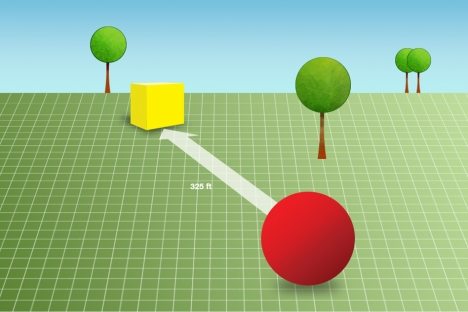The Microsoft Kinect was a boon to robotics researchers. The cheap, off-the-shelf depth sensor allowed them to quickly and cost-effectively prototype innovative systems that enable robots to map, interpret, and navigate their environments.
But sensors like the Kinect, which use infrared light to gauge depth, are easily confused by ambient infrared light. Even indoors, they tend to require low-light conditions, and outdoors, they’re hopeless.
At the International Conference on Robotics and Automation in May, researchers from MIT’s Computer Science and Artificial Intelligence Laboratory (CSAIL) will present a new infrared depth-sensing system, built from a smartphone with a $10 laser attached to it, that works outdoors as well as in.
The researchers envision that cellphones with cheap, built-in infrared lasers could be snapped into personal vehicles, such as golf carts or wheelchairs, to help render them autonomous. A version of the system could also be built into small autonomous robots, like the package-delivery drones proposed by Amazon, whose wide deployment in unpredictable environments would prohibit the use of expensive laser rangefinders.
“My group has been strongly pushing for a device-centric approach to smarter cities, versus today’s largely vehicle-centric or infrastructure-centric approach,” says Li-Shiuan Peh, a professor of electrical engineering and computer science whose group developed the system. “This is because phones have a more rapid upgrade-and-replacement cycle than vehicles. Cars are replaced in the timeframe of a decade, while phones are replaced every one or two years. This has led to drivers just using phone GPS today, as it works well, is pervasive, and stays up-to-date. I believe the device industry will increasingly drive the future of transportation.”
Joining Peh on the paper is first author Jason Gao, an MIT PhD student in electrical engineering and computer science and a member of Peh’s group.


